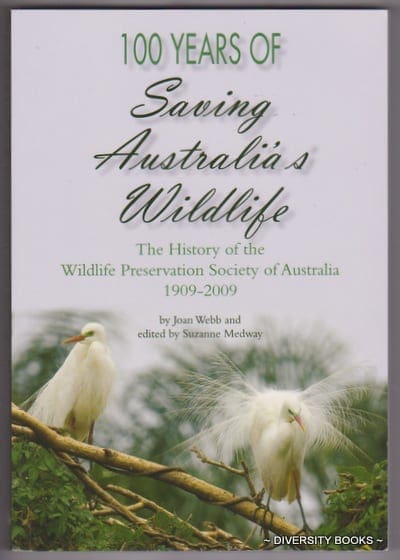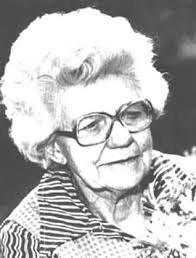Australian Wildlife Society - Movements Throughout History
1909
- The Wild Life Preservation Society of Australia was formed on the 19th May 1909 in the Royal Society's Hall, 5 Elizabeth Street, Sydney.
- Our founders suggested the need for such a group in a talk with the Naturalists’ Society of NSW. The Swedish Consul-General for Australia, Count Birger Mörner, organised the first preliminary discussion in the Consulate on 11 May 1909. As an outcome of this discussion, it was decided to call a public meeting for the formation of the Society. Fifty people attended and were enrolled as the first members of the Society. Within one week, the newly formed Wild Life Preservation Society of Australia had grown to more than one hundred members.
- David George Stead, a member of the Naturalists' Society, was a strong advocate for the formation of such a Society by writing to the Sydney Morning Herald in 1900 and 1902. He commented on the uniqueness of Australia’s fauna and flora and "that we should conserve as much as possible of the land and its interesting tenants”.
- The Honourable Frederick Earl Winchcombe, MLC (1855-1917) was the first President of the Society.
- First Council meeting of the Wild Life Preservation Society of Australia was held on 23 July 1909.
- Our Society pioneered the recognition of the need for legal protection for our animals and plants.

1910s
- The Society was successful in obtaining official protection for the koala first in 1911 and 1912, in New South Wales.
- The Society was greatly concerned at the growth of the plume trade and traffic in wild birds and as a result took action, including through the State and Federal Government, in the matter of prohibiting import and export of plumes. The Society successfully lobbied Lady Denman, wife of the Governor-General, to make a public statement against the use of bird feathers in women’s hats. She subsequently banned the wearing of bird plumage in hats at Government functions.
- In 1911, it was decided that the Society should draft a Bill for introduction to Parliament to take the place of the current and complicated Act to protect native birds and animals, which became law in 1919.
1920s
- In 1926, the Society expressed regret and disappointment that the prohibition on the exportation of wild birds was not being enforced. Until, in 1948, the Fauna Protection Act was introduced (see 1940s).
- For many years the Society was one of the prime movers in action towards the preservation of native plants. During 1926, a Bill to make provision for the regulation and control of the picking of wildflowers and native plants was brought into Legislative Council and in 1927 became law. In this law, provision was made for the notification of any wildflower or native plant to be protected throughout the whole State of New South Wales. As was the case with the Birds and Animals Protection Act, the Wild Flowers and Native Plants Protection Act 1927, was based upon a Draft Bill prepared by the Society.
- A perusal of the Society's Annual Reports and past issues of Australian Wild Life indicate that a large number of sanctuary areas in various parts of Australia were set aside wholly or partly as a result of the efforts of the Society, especially in the first forty years of the Society's existence. For example, the Society's Annual Report for 1927 contained a reference to an effort by the Society to have a significant reserve set aside - Mount Tomah Botanic Garden and in 1928. Mount Warning was set aside as a National Park as a result of the efforts of the Society.
1930s
- The Society's 'modest journal' was issued for the first time. David Stead was the Editor of the Journal. This publication was produced once a year and the bulk of it was occupied by the Annual Report.
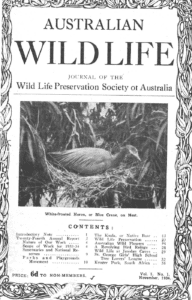
- The Society effectively brought to an end the export of koala fur, to the United States, under the guise of other species.
- The Northern hairy-nosed wombat was close to extinction and as a result, the Society lobbied to establish Epping Forest Nature Reserve in Queensland to protect this species.
- The Society had a continued interest in parks and reserves and purchased a small reserve near Manly, NSW called Angophora Reserve. The reserve contained the Sydney red gum, Angophora costata. After a few years, it was found to be impracticable for the Society to exercise adequate supervision over the Angophora Reserve so, following negotiations with Warringah Shire Council, the area was placed in its custody.
- The Society sought co-operation from other conservation groups to protect native wildlife - Australian Forest League, Parks and Playground Movement, The Federation of Bush Walkers, Town Planning Association, The Associated Tree Lovers Civic League, Royal Zoological Society, Linnaean Society of NSW, Gould League of Bird Lovers and the Army of Junior Tree Wardens.
- The Society also took interest in Ball's Head Reserve, on the shores of Sydney Harbour, commencing with the first official tree planting there on Saturday 25 July 1931. Annual tree plantings by the Society continued for many years.
- The Society participated in a successful campaign to protect Hinchinbrook Island, most of the Island being declared a national park to become Australia's largest island national park.
- In 1937, the Society reported its concerns regarding the use of firearms by people shooting protected birds and other wildlife for sport. The Society would keep fighting for a tightening up of the law.
- It has been part of the Society's policy to support allied conservation groups over many years of its existence. This support includes a presence and a voice at conferences wherever the wildlife conservation message is being promoted. An early example of this kind was the Society's attendance at the Australian and New Zealand Association for the Advancement of Science Congress in New Zealand in 1937.
- The Society received its first Corporate member - St. Georges Girls' High School.
1940s
- When the Society was informed, in 1941, that a number of splendid Eucalypts had been cut from the Hazelbrook Gully Reserve, the Society took action and got in touch with the Hazelbrook Group of Blue Mountains and with the Forestry, Lands and Chief Secretary's Departments and suggested to the first-mentioned body a line of approach with a view to further action. Discussions and correspondence went on until June 1943. The most important result was that the movement for the Great Blue Mountains Nature Park was given a very definite push forward; and in the meantime, the Minister for Agriculture and Forests agreed that ' the whole area would be exempted from the operation of timber licenses'.
- In 1945, the Minister introduced into State Parliament and Amending Bill, relating to Wild Flowers and Native Plant Protection.
- The Society continued to campaign on the dangers of marine pests in ballast water and more research needed into methods of countering danger of exotic organisms coming into Australia through shipping.
- In 1948, the Fauna Protection Act was passed. The Society had played a significant part in wildlife protection long before legislation became a factor in preservation. Allen Strom, Secretary of the Society, was elected as a member of the Fauna Protection Panel. Most important was the action of the panel to prevent the export of fauna (see 1960s).
- The Society was the first non-governmental organisation to attend IUCN (International Union for Conservation of Nature and Nature Reserves) to represent world conservation issues.
- The Society advocated for the establishment of a Commonwealth control and coordination of conservation measures, where the administration of wildlife conservation matters should be controlled by the Commonwealth Government. The Society pointed out that differences in legislation between States led to considerable abuse and it was quite ridiculous to expect flora and fauna to respect political boundaries (see 1970s).
1950s
- Thistle Harris-Stead, president of the Society (1949-1952), represented the Society in a move to declare a Primitive Area within the Kosciuszko State Park. The Society had long been working actively for the elimination of grazing from the alpine areas in Australia (see 1960s).
- Vincent Serventy, a member of the Society and President of the Western Australian Naturalists' Club, decided to revive the natural history exhibitions. He called his first one the "Wild Life Show" and it proved a great success.
- At the Wild Life Show in September 1953, a boy brought a small tortoise to Vincent Serventy, asking for identification. 'A long-necked swamp tortoise', Vincent said with confidence. 'Mine's got a short neck', the boy replied. A public appeal, following the re-discovery of this tortoise, saved the swamps on the farm where the tortoise had been found and a concerned government saved those that were left to become the Ellenbrook Nature Reserve
- Shark bay, north of the Abrolhos Islands in Western Australia, had been a place of special interest for Vincent Serventy and he was anxious to see it preserved in as pristine a state as possible. Vincent wanted Shark Bay to become a World Heritage-listed site. Vincent spoke to Sir Thomas Wardle, owner of Dirk Hartog Island who wanted the Island to become a nature reserve, the Federal Government, State conservation departments and helped in the production of a film on Shark Bay. The film was a successful venture which helped the conservation cause with an increase in the public interest for World Heritage Listing.
- The Society expresses and emphasises its stance on the production of educational material relating to Nature Protection and Conservation be incorporated in the curricula of primary and secondary schools, universities and technical colleges and that the Departments of Natural Resources be established in centres of higher learning.
- The fight against the export of fauna was fought on several fronts by the Society. David Stead wrote a letter to the Private Secretary to the Queen and at the 1952 ANZAAS (Australian and New Zealand Association for the Advancement of Science) Congress in Sydney, the Society submitted recommendations for the cessation of export of fauna, except under certain stringent conditions. But apparently they were too much for the preliminary committee of Congress to digest, as that body did not pass them on. At the 1955 ANZAAS Congress in Melbourne, the same motion came up for discussion and was passed.
- In 1957, the Society prepared a statement for the Director-General of Education, New South Wales, which subsequently appeared in the Education Gazette. This drew attention to the necessity for care in the protection of both plants and animals by children and teachers engaged in fieldwork, which was becoming increasingly popular. A circular was sent to all Inspectors of Schools in New South Wales, asking for their assistance in interesting schools in conservation (see 2010s).
- In March 1957, Australian Wild Life contained an article by Vincent Serventy titled 'The Requirements of a Conservation Programme'. Vincent Serventy referred to the need for modern and flexible legislation (to protect fauna from destruction by farmers or 'sportsmen') and to tighter control over reserves.
- In August 1957, David Stead died, aged eighty and a memorial fund was established in his honour.
- In 1958, a very successful Conservation Conference was held in Sydney. The Conference decided to ask the Organising Committee to delegate the motions passed to the appropriate bodies for action. The Society was asked to deal with the export of fauna, indiscriminate rubbish dumping, amendment to the Fauna Protection Act, organising a conservation exhibition and promoting a list of protected birds.
- In 1959, Roy Bennett, Past President, wrote a comprehensive report to mark fifty years of conservation work by the Society.
1960s
- Attempts were made to set up an Education Committee to get the Society's message across to schools and young people, however the project never got off the ground.
- In 1962, Land was acquired at Bargo, New South Wales, on which a memorial sanctuary for David Stead was established, Wirrimbirra Sanctuary (see 2010s).
- In 1964, Vincent Serventy inaugurated the world's first Conservation Day, to celebrate and promote the importance of conservation of the total environment.
- In 1966, Vincent Serventy became President of the Society and Thistle Harris-Stead was Vice-President.
- It was Thistle's love and concern for alpine areas which occasioned the interest of the Society in this area for many years. Thistle continued her visits to Kosciuszko and campaigned against the destruction being caused by engineering works allowed by the Snowy Mountains Authority and was awarded the Australian Natural History Medallion by the Field Naturalists Club of Victoria.
- In 1966 it was announced that, in the future, the Annual Report would be a separate publication and Australian Wild Life would appear twice during the year with factual material intended to be of general interest to members. In addition, another publication, Nature in Australia, appeared towards the end of 1965. This was to replace the old well-known and useful Australian Naturalist, the publication of the Naturalists' Society of New South Wales, which by this time had amalgamated with the Society. However, Nature in Australia ceased publication with the April 1967 issue, being replaced by Wildlife in Australia. Wildlife in Australia covered aspects of wildlife conservation for the whole of Australia and this comprehensive outlook was supported by Vincent Serventy, who was Editor for sixteen years. During this time Carol Serventy was Assistant Editor.
- In June 1967, Thistle and Vincent went to Tasmania to lend their support to the 'Save Lake Pedder' campaign and they gave evidence at a Parliamentary Enquiry into the Gordon Scheme. Thistle wrote to the International Union for Conservation of Nature and Natural Resources seeking their support.
- In 1967, the National Parks and Wildlife Act was introduced. For many years, the Society had lobbied the NSW Government and made a significant contribution by its submissions and letters during the critical formative period. The President of the Society, Vincent Serventy, was appointed to the Advisory Council. Both the Fauna Protection Act and Wild Flowers and Native Plants Protection Act came under the new administration of the National Parks and Wildlife Act.
- With the passing of the National Parks and Wildlife Act, Kosciusko became a National Park, but it was not until 1969 that all grazing within the boundaries of the Park ceased.
- Other conservation projects during this era consisted of Conserving Dee Why Lagoon, the rainforests of Wyrrabalong National Park and protecting the Great Barrier Reef from oil drilling and mining and strongly urged for the whole province of the Great Barrier Reef to be classified as a National Park.
1970s
- The matter of Commonwealth coordination was still a concern for the Society in 1972 when a letter was sent to the Prime Minister (Hon. W. McMahon). He assured the Society that the Office of the Environment would be included in the Department of the Vice-President of the Executive Council and that Government would go ahead with a plan for a National Advisory Council. The coming to power of the Whitlam Government was an environmental watershed.
- In December 1975, it was reported in Australian Wild Life that there were still tree plantings being carried out by the Society. November 1978 appears to be the last recorded tree planting ceremony by the Society.
- Vincent Serventy published Dryandra: the story of an Australian forest, which coincides with news of Alwest Mining Company given the rights to mine the Dryandra woodlands for bauxite. The Society initiated a protest with Rupert Murdoch, a major shareholder in the mining company, and succeeded in stopping the mining of this area.
- The Society published a guide to assist in preserving the quality of Australia's environment.
- The Society leads a campaign to develop new wildlife corridors to provide habitat for wildlife migration.
- The Society campaigned for the Shoalwater Bay area to be saved from sand mining by placing the region on the national estate.
1980s
- Thistle Harris-Stead was awarded a member of the Order of Australia (AM) for services to wildlife conservation.
- The Society successfully lobbied to protect the nearly extinct, flightless Lord Howe Island woodhen. Funds were sought to initiate a captive breeding program to save the woodhen.
- The Society lobbied to protect Lord Howe Island which resulted in permanent Park Preservation status and was listed on the UNESCO World Heritage List.
- The Society urged the Federal Government to proclaim the Osprey and Bougainville Reefs a marine national park.
- The Society began campaigning to form a federation of conservation councils across Australia.
- Vincent Serventy published Saving Australia and highlighted the major problem as “soil degradation”.
- Vincent Serventy leads the Society to prevent Mount Lesueur area east of Jurien Bay, WA to be used as an open-cut coal mine and power station site. The campaign to preserve Mount Lesueur was successful and 26,987 hectares became Lesueur National Park.
- The Society produced a brochure in conjunction with the Nature Conservation Council of NSW entitled Wildlife in Danger in NSW.
- Famed artist John Coburn prepared five designs for an international conservation logo.
- A push for wildlife corridors was successful with Victoria, South Australian and Western Australia making this governmental policy.
- The Society supported Birds Australia Regent Honeyeater Recovery Project in Capertee Valley by planting native trees.
- The Society advocated for the protection of Creery Wetlands in Western Australia and large areas of land and sea in Jervis Bay.
1990s
- On 5th July 1990, Thistle Harris-Stead passed away, aged eighty-seven. All her assets and the Wirrimbirra Sanctuary were left to the National Trust of Australia so that David Stead's memorial could be looked after in perpetuity.
- The publication Wildlife in Australia was revamped and titled Australian Wildlife. The magazine received a new attractive and informative format with Patrick and Suzanne Medway being the Editors.
- The Society joined other conservation groups to oppose peat mining at the Wingecarribee Swamp, near the Shoalhaven River area, to save local wildlife.
- The Society Campaigned to save Towra Point in NSW which commenced with the Steering Committee and Friends of Towra Point Nature Reserve was formed to save Towra Beach and Lagoon.
- The Society sought support from NSW Environment Minister, Bob Debus MP, who formally announced a $1m grant for Towra Beach re-nourishment program to save habitat for migratory wading birds on Towra Beach.
- The Inaugural Serventy Wildlife Conservation Medal was awarded to Mrs Margaret Grace Thorsborne of Melunga Creek, Cardwell Queensland for her commitment to saving the native pigeon.
2000s
- In the late 1960s, the Society lobbied to protect the Great Barrier Reef. The Society could not believe that only 4.6% of the Great Barrier Reef was highly protected. A coalition was formed by concerned environmental groups, including the Society, to ensure the protection of the Great Barrier Reef for future generations by increasing protected zones and marine sanctuaries. The coalition agreed to lobby for fifty percent total protection but only recently succeeded with a new Zoning Plan for the entire Marine Park coming into effect on 1 July 2004 and protecting over 33% of the Great Barrier Reef.
- In 2000, after considerable campaigning, the Australian Wildlife Society successfully lobbied the NSW Government to ban the mass release of balloons in New South Wales. In 2003, Suzanne Medway decided that the Society should address the issue of mass helium balloon releases nationally.
- In 2004, President, Patrick Medway, and Executive Director, Suzanne Medway, attended the Australian Wildlife Management Society's Annual Conference along with representatives of the Australian Koala Foundation (AKF). Together, they were able to observe first-hand the status of the koala there. AKF presented a submission to the Federal Environment Minister asking for the koala to be listed as a vulnerable species and, in 2005, called on the South Australian Minister for Environment and Conservation, the Hon. John Hill, to conduct an urgent review of the science underpinning koala number estimates on Kangaroo Island.
- In 2005, the University Student's Wildlife Research Grants scheme was introduced.
- The Earth 2000 Conference was held in Sydney with Professor Jared Diamond as the Guest Speaker.
- Dr Vincent Serventy AM retired, and Patrick W Medway AM was elected President of the Society.
- The Governor-General Of Australia, His Excellency Major General Michael Jeffrey AO, became the Society's patron.
- The Society held a "Save our Soils" Conference to highlight the effects of soil degradation on native flora and the need to protect our soils.
- Councillors and members of the Society visited the Wellington and Dubbo area to see the problems and abuse of the Southern Brigalow Biosphere reserve system. They joined a campaign to save the Pilliga Scrub.
- A small caravan was purchased to assist volunteers working on the Cape Solander Whale Migration Study.
- Towra Point Nature Reserve project was successfully completed, and Towra Point Beach was restored to protect migratory wading birds in and around Botany Bay.
- Hon Morris Iemma MP, Premier of NSW, launched a Centenary appeal to raise funds for the Society's new Ecoworld Gardens Environmental Education Centre project at Rockdale with a large donation.
- Patrick W Medway AM became the Society's representative on the NSW State Pest Animal Control Council, leading a campaign to reduce the impact of feral pests on wildlife.
- Dr Vincent Noel Serventy AM died on Saturday, 8 September 2007, aged 91.
- The Society lobbied milk and drink manufacturers for change in the design of plastic bottle top rings to snap upon opening to prevent injury to wildlife, especially the blue satin bowerbird.
- The reduction of roadkill campaign continued, with emphasis on increased scientific research being needed.
- A decade of coalition campaigns continued - such as a ban on duck shooting; River red gum nature reserves; Save the Macquarie Marshes; ban on mass release of helium balloons; Murray River environment flow; save Pilliga Scrub ironbark; Stock Routes Coalition; Brigalow Belt South Bioregion; Bristlebird Recovery Program; Cassowary Conservation; flying foxes; Narrandera Koala Regeneration; Solitary Islands Marine Park; Tasmanian devil facial tumour problem.
- The Governor-General of Australia, Her Excellency Ms Quentin Bryce AC, became the Society's patron.
- On 11 May 2009, the Wildlife Preservation Society of Australia Limited celebrated 100 years of wildlife conservation in Australia.
- In 2009, the Australian Wildlife magazine went from black and white to full colour to celebrate our Centenary year.
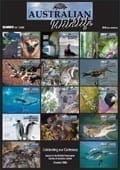
2010s
2013
- In 2013, the Wildlife Preservation Society of Australia changed its marketing name and logo to Australian Wildlife Society. The Society has used this name since 1934, and it is the name of our quarterly magazine, Australian Wildlife.
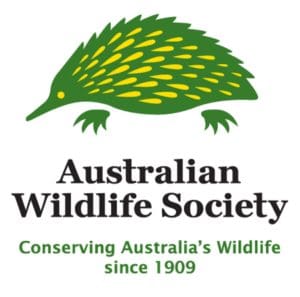
- The Society continued to advocate for the protection of Australia's wildlife by writing letters to businesses, writing to and meeting with Ministers in person, attending and presenting at a variety of events, educating the general public through social media, Australian Wildlife magazine, attending events and speaking with them directly.
2019
- In 2019, the Society reached its 110th Birthday and celebrated it by partnering with Design Centre Enmore TAFE NSW to create a special promotional video.
- The first National Office Manager, Ms Megan Fabian, was employed.
- The Society formed the NSW Platypus and Turtle Alliance to protect air-breathing aquatic wildlife from drowning in enclosed yabby nets by banning them in NSW.
- The Society's online presence increased on several social media platforms, and so did the Society's followers.
- The Society offered complimentary membership to NSW Government School students to encourage the younger generation to explore and develop a deeper understanding of environmental issues, engage in problem-solving, gain skills to make informed decisions and take action to improve the environment.
- Wirrimbirra, now known as the Australian Wildlife Sanctuary, continues today under the ownership of The National Trust of Australia (NSW) and new operators, The Australian Wildlife Foundation. The Australian Wildlife Sanctuary will be committed to conserving the natural environment, cultural heritage and education.
- The Society established a colouring-in competition to inspire the younger generation to learn about Australia's native wildlife via visual art and creativity. We hope that the experience allows participants to explore and develop a deeper understanding of environmental and wildlife-related issues.
2020s
2020
- Australia experienced a bushfire crisis from December 19 to January 2020. An extensive amount of land and wildlife were completely wiped out. The Society set up an initiative to assist wildlife rescue groups to rehabilitate injured and bushfire-affected wildlife.
- The Society placed their efforts towards banning duck shooting in Victoria along with 43 other organisations MORE> MORE>
- In 2020, The Society inaugurated 'Australian Wildlife Week', which was included on the Calendar of Environmental Events. The event was created in the hope to raise awareness and inspire all Australians to explore and develop a deeper understanding of environmental issues, gain the necessary skills to make informed decisions, and take action to improve the environment.
- The Society advocated for the protection of wombats in Victoria. As a result, the Victorian Government reversed a 1984 decision to 'unprotect' wombats in certain parts of Victoria, which allowed them to be killed at a landowners' discretion or even hunted for fun. Wombat hunting was officially banned.
- Land clearing, habitat loss, and the impact of feral animals on native wildlife and wildlife habitats continued to be major conservation issues throughout 2020. The Society proactively advocated for the preservation of native wildlife and wildlife habitats, especially against the logging and destruction of native and old-growth forests.
- The Governor-General of Australia, His Excellency General the Honourable David Hurley AC DSC (Retd), became the Society's patron.
- In 2020, the Society established Snip Rings for Wildlife. The campaign aims to raise awareness and encourage individuals to protect Australia’s wildlife, by cutting through plastic rings, rubber bands, hair ties, the loops of facemasks, and plastic dome-shaped lids before disposing of them. Meanwhile, the Society continued to urge companies to take action to improve the design of their products to a more wildlife-friendly alternative. The impact of balloons and balloon strings in wildlife continued to be raised, seeking action from the Government.
- Climate Action: In November 2020, a bill passed parliament that will make New South Wales a 'clean energy superpower. The new law took the state from sourcing 20% of its electricity from renewables to 70% by 2030, by quadrupling the number of solar panels and wind turbines in the state. The Society, along with many other individuals and organisations, has kept the pressure up to ensure Governments deliver on their promises. However, to meet our Paris commitments, the state needs to get to 100% clean energy by 2030. Consequently, there is still a little way to go, but this was a huge step up for climate action in New South Wales.
- For the first time in over one hundred years, the board of the Society decided to establish a new National Office at 29B/17 Macmahon Street Hurstville New South Wales 2220 to cope with the expanding work of the Society in wildlife conservation across Australia.
- In September 2020, the Society employed a new part-time permanent Clerical Assistant to ensure that we comply with the various regulations by several government agencies, such as the Australian Charity and Not-for-profits Commission.
2021
- The Society collaborated with other wildlife organisations campaigning to obtain national protection for the platypus. In January 2021, the platypus was officially listed as Vulnerable in Victoria. The Society continued to encourage the New South Wales and Queensland Governments to step up their game and follow Victoria's lead.
- The Society's efforts were recognised with a ban/phase-out of enclosed yabby traps implemented in New South Wales from 30 April 2021.
- In March 2021, Dr Julie Old became the 19th President of the Society, following Suzanne Medway AM's retirement and Ms Megan Fabian was appointed as Editor of the Australian Wildlife magazine.
- In June 2021, the Environment Minister, Matt Kean, announced that the New South Wales Government plans to phase out all single-use plastics by 2025 to stop 2.7 billion items from becoming litter. Plastic straws and cutlery, lightweight plastic bags, and microbeads in cosmetics are among the items that will be banned from New South Wales from next year under laws to curb the amount of rubbish going into oceans and landfill - positive news for marine and other native wildlife.
- In July 2021, after years of advocating for a ban on balloons, releasing balloons into the environment became illegal in Victoria. Balloons and balloon strings can entangle, choke, and kill marine life and other animals. That is not to mention the wasteful use of helium, a non-renewable resource.
- On 20 July 2021, the Society launched a petition calling on the NSW government to urgently take action to prevent native wildlife from becoming entangled in ring-shaped items and dying preventable deaths. Although we did not meet our ultimate target, we received over 500 responses. Petitions signed by 500 or more persons require a response from the government. The receipt of the response is reported to the House and published on the Legislative Assembly page of the Parliament's website.
- We received a response to our #SnipRingsforWildlife petition on 17.11.21, which acknowledged the importance of the campaign. The response focused on plastic waste reduction and stated that the Plastic Reduction and Circular Economy Bill 2021 might provide a framework to address ring-shaped items in the future. The response highlighted that the New South Wales Plastics Action Plan outlines a commitment to review other plastic items for a future phase-out, including plastic cups and their lids (including dome-shaped lids), in three years to determine whether a phase-out is appropriate at that time. The response stated that the government recently released the New South Wales Waste and Sustainable Materials Strategy 2041. The strategy outlines the government’s approach to transitioning to a circular economy over the next twenty years and introduces a new overall littler reduction of sixty percent by 2030 and a plastic litter reduction target of thirty percent by 2025. The strategy will invest $38 million over five years in litter prevention programs to help protect the natural environment, waterways, and wildlife.
- The Society hosted its first online webinar during Australian Wildlife Week during the first week of October 2021.
- The Society established a Roll of Honour, launched at the 2022 Annual President’s Luncheon, to highlight past luminaries who have made a significant contribution to the longevity and success of the Australian Wildlife Society and who are respected in the wider conservation field for their contribution to the preservation of Australian wildlife. The luminaries added to the very first Roll of Honour were: Mr Ken Mason, Dr Clive Williams OAM, and Mrs Suzanne Medway AM.
2022
- In May 2022, the University Research Grants were increased from ten $1,500 grants to ten $3,000 grants awarded to honours or postgraduate students at Australian universities.
- The Society's efforts were recognised with a ban on lightweight plastic bags in New South Wales from 1 June 2022. The Society welcomes the ban, which will help protect Australia’s wildlife, particularly marine species that depend on healthy reefs and oceans for survival. We are pleased that New South Wales has now joined the other states and territories to enforce such a ban to help protect our native wildlife and natural environment for future generations.
- In August 2022, the NSW Parliament was compelled to debate the future of native forest logging after more than 20,000 people signed a parliamentary e-petition. The petition called for an end to native forest logging and a transition to a 100% plantation-based industry by 2024.
- On Thursday, 8 December 2022, the 2022 NSW Volunteer of the Year State Ceremony was held. The Board of the Society was delighted to be recognised as the winner of the 2022 NSW Not-For-Profit Governance Award.
- We won! The NSW Coalition was forced to withdraw its bill that would have fast-tracked logging in native forests.
2023
- In May 2023, the Society's efforts were recognised, with the end of native forest logging in Victoria to end in December 2023, six years earlier than previously planned.
- In September 2023, our efforts paid off with 106 koala hubs covering 8,400 hectares (5% of the proposed Great Koala National Park containing 42% of recorded koala sightings in the area) of state forest on the mid-north coast (in the future Great Koala National Park) will be protected from logging. The remaining 95% of the proposed park area is still threatened by logging, and it’s critical we make sure that the moratorium on logging in koala hubs doesn’t lead to an increase in logging in other parts of the park.
- In November 2023, Stephen Grabowski became President following Dr Julie Old's resignation.
2024
- The Society purchased its first-ever National Office and Education Centre in Campbelltown, New South Wales. The official opening occurred on Tuesday, 20 August 2024 at 11 am at Lots 7,8,9/121 Queen Street, Campbelltown NSW 2560.
Presidents of the Society Since 1909
The Hon Frederick Earle Winchcombe, MLC (1855-1917)
Sir Joseph Hector McNeil Carruthers, KCMG LLD (1856-1932)
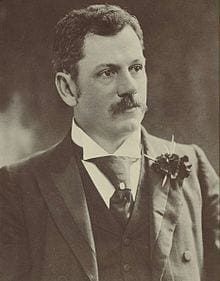
Walter Wilson Froggett (1858-1937)
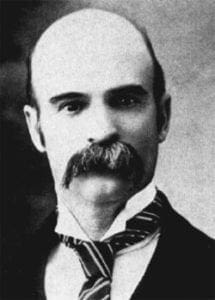
Richard Hind Cambage (1859-1928)
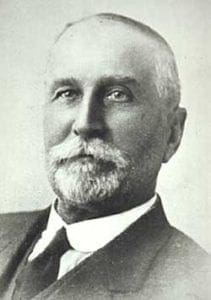
Ernest Arthur D'Ombrain, MB BSc (1894-1944)
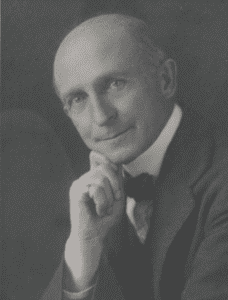
Henry Charles Lennox Anderson, BAMA (1853-1944)
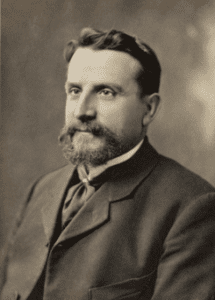
David George Stead (1877-1957)
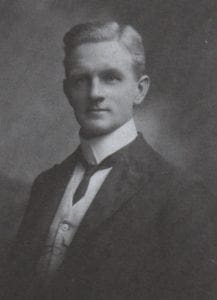
Frederick Lynne Rolin, BA (1870-no records)
David George Stead (1877-1957)
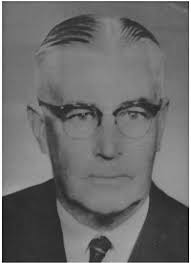
Captain Roy Frederick Bennett (1895-1972)
William George Kett, DSc (1887-1962)
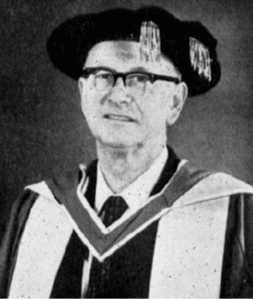
Mrs Thistle Yolette Harris-Stead (1902-1990) (Voice Recording)
Walter Henry Childs, MVO (1892-1964)
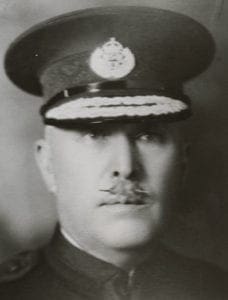
James Gordon McKern, BEng (1888-1975)
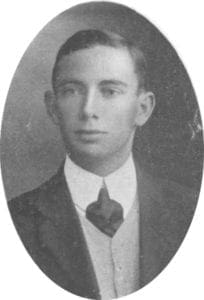
John Trevor Bennett (1920-2010)
Dr Vincent Noel Serventy, AM BEd BSc DSc (1916-2007)
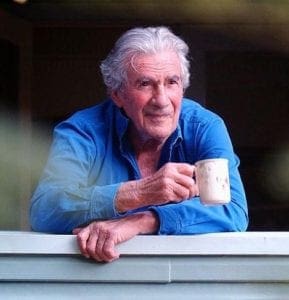
Mr Patrick Winston Medway, AM BA MEd JP (1940-)
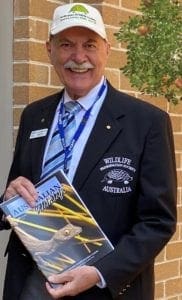
Mrs Suzanne Lydia Medway, AM (1950-)
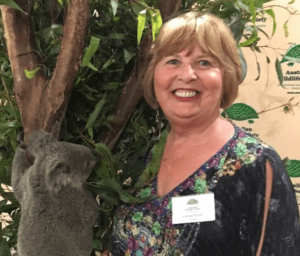
Dr Julie Maree Old, BSc (Hons), PhD, MHighED (L&T), SFHEA (1974-)
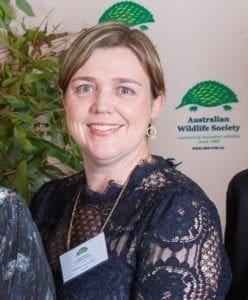
Mr Stephen Grabowski (1972-)
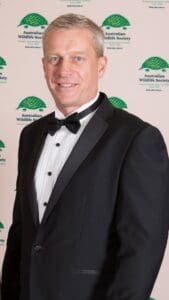
Members of the Society Since 1909
Fifty members were enrolled on the evening of 19 May 1909 and, within a week, this number had been raised to over one hundred.
165 Members
349 Members
409 Members:
99 Life Members
264 Annual Members
30 Corporate Members
4 Corporate Life Members
7 Student Members
5 Honorary Members
719 Members:
456 Annual Members
4 Honorary Members
51 Junior Members
16 Student Members
387 Members
It should be noted that in the early 1970s the Queensland branch of the Society incorporated and became an independent conservation group. The Australian branch based in New South Wales lost over one hundred members to the Queensland group.
320 Members
473 Members
Approximately 500 Members
The largest majority of members came from the over fifties age group, were long0term members and very loyal and generous with their donations.
The University Students Wildlife Research Grant project was introduced, with the cirteria that all applicants must be members of the Society. Since that time, the majority of new members were in the under thirties age group
Approximately 700 Members
The demographic age of membership changed dramatically to a younger generation.
The biggest change in recruitment of new membership is through the Society's website and the majority of new applications are now being received through this medium.
612 Members:
Individual Members - 117
Family Members - 10
Concession Members - 54
Corporate Members - 5
E-Mag Members - 29
Associate Members - 11
Life Members - 31
Student Members - 355
551 Members:
Individual Members - 142
Family Members - 8
Concession Members - 56
Corporate Members - 7
E-Mag Members - 41
Associate Members - 8
Life/Hon Members - 26
Student Members - 263
Note: This year, we worked on tidying up our membership database. Furthermore, the number of Student Members decreased, most students choosing not to renew after completing their studies.
603 Members:
Individual Members - 143
Family Members - 11
Concession Members - 46
Corporate Members - 13
E-Mag Members - 40
Associate Members - 14
Life Members - 23
Student Members - 292
Complimentary Members - 21
595 Members:
Individual Members - 120
Family Members - 13
Concession Members - 46
Corporate Members - 12
E-Mag Members - 33
Associate Members - 14
Life Members - 24
Student Members - 313
Complimentary Members - 20
549 Members:
Individual Members - 108
Family Members - 13
Concession Members - 45
Corporate Members - 11
E-Mag Members - 41
Associate Members - 14
Life Members - 24
Student Members - 284
Complimentary Members - 9
